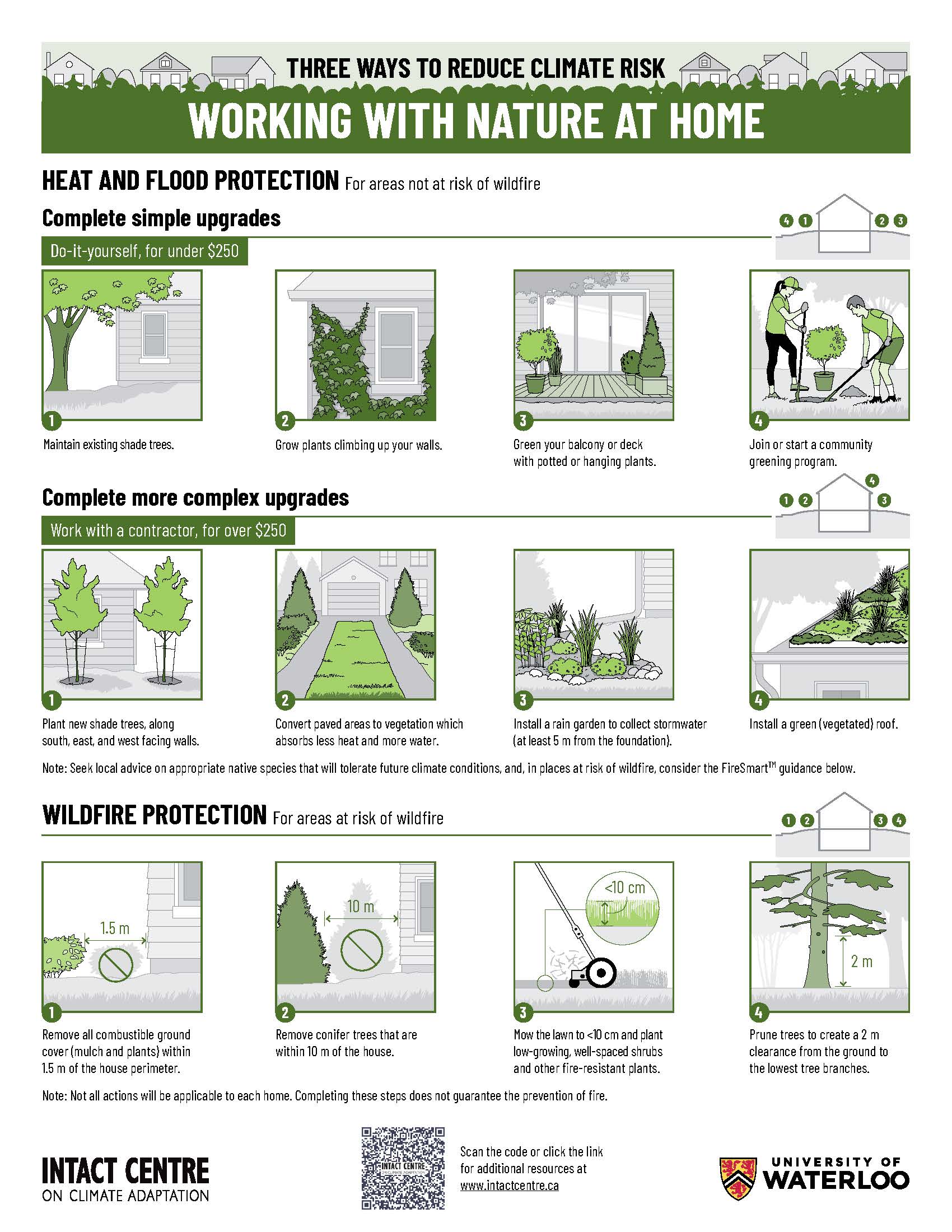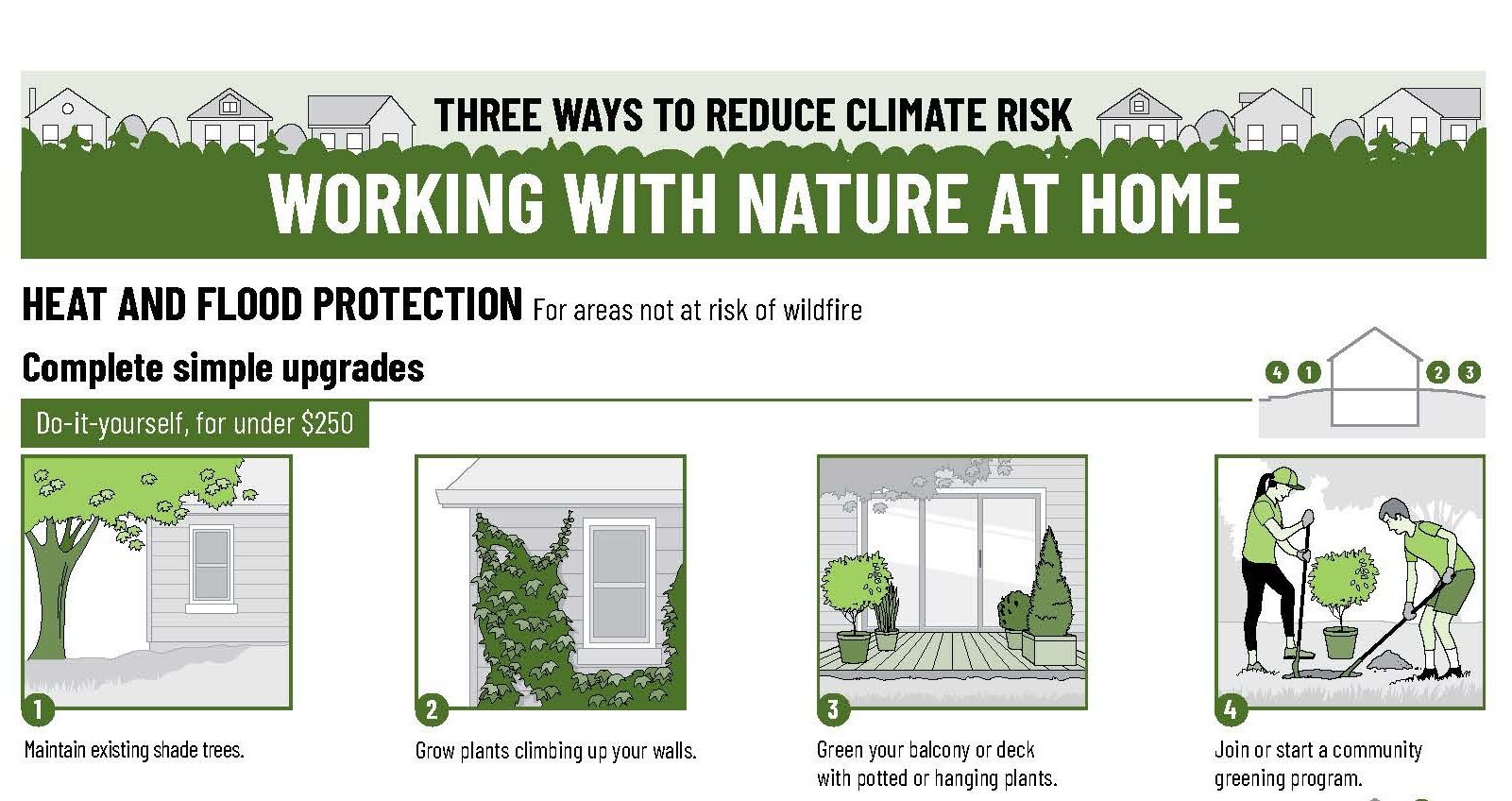Given the daily reports of extreme weather around the globe, the UW-based Intact Centre for Climate Change has released some timely advice about how to work with nature to protect your home from such weather events.
The infographic is the latest offering in the organization’s three step climate-ready infographic series, which gives people achievable steps they can take to become more prepared for climate-related issues with their properties.
Entitled ‘Working with Nature at Home,’ it offers ideas on ways to use nature to protect a home from heat and flooding. This is broken into information for areas at risk of wildfire and those that are not, as well as single-dwelling homes and apartments.

“That is the question that we’re always asked: what can people do about climate? That’s because everyone has seen the smoke from the wildfires, the flooding, the extreme heat and climate risk is moving up in the agenda, so we’re trying to provide as many free and easy to understand tools as possible,” said Joanna Eyquem, the managing director of climate-resilient infrastructure at the Intact Centre on Climate Adaptation.
“There’s a difference between having a tool an d the tool being used, that is, people actually using and acting, based on the tool. Using and disseminating this infographic and getting feedback from people on the infographic is crucial, because essentially, people are not taking action on the ground,” she said.
For Eyquem, the goal is to get people to start thinking about climate change adaptation in their everyday lives, and when they’re making choices about their home.
In Waterloo Region, Eyquem says the major climate impact is extreme heat. Yet, she sees a gap in how government messaging addresses this heat.
“[Government agencies] are communicating with people about what to do during extreme heat, but not how they should be preparing before,” she said.
She says the organization produces these infographics with the help of subject matter experts across the country.
“For example, the actions for heat come from a heat report for which we had 70 subject matter experts across the country [review]. We produce a draft, and we get people to review it and provide input and refine it. We’re confident that we are identifying appropriate measures,” she said.
Some of the recommendations included in the graphic include steps that can be taken for less than $250, the likes of maintaining existing shade trees, growing plants up the outer walls of your house, planting potted plants on your balcony or deck and planting more plants in the community.
Ideas for over $250 include planting new trees, converting paved areas to vegetation, installing rain gardens or green roofs. There are other ideas for areas at risk of wildfire.
Eyquem says these infographics are important because at the end of 2022, the federal government released the National Adaptation Strategy that included two key targets for increasing awareness of climate change risks for their households and actions taken to prepare for them, including that by 2025: 60 per cent of Canadians, including northerners and Indigenous peoples, are aware of the disaster risks facing their household, and 50 per cent of Canadians have taken concrete actions to better prepare for and respond to climate change risks facing their household.
“But at the moment, there isn’t a strategic approach to making sure that people have the information on climate risks, and that they know what to do in their house to reduce that risk,” she said.
“We’ve been talking to different levels of government. We have several municipalities that have taken on these infographics and are disseminating them.”
She said staff at the city of Calgary, for example, have worked with her team to develop some tools for citizens to access.
“That’s great, but it would be good if there was a provincial or federal push to get this information in people’s hands, because we can’t rely on people going to a website. When they’re not searching for it, they’re never going to find it.”
Eyquem says that the government demonstrated the ability to communicate urgently with the public on public health issues during the pandemic.
“When we urgently need to communicate with people on health matters, we can do it. But climate adaptation or climate risk is not seen as urgent,” she said. “I received a postcard in my post box about radon testing from Health Canada – that’s the public communication method that has been used, and all my neighbours started talking to each other about radon and sending off for these testers and monitoring in their homes. So we can do that, but we’re just not doing it for climate risk.”









